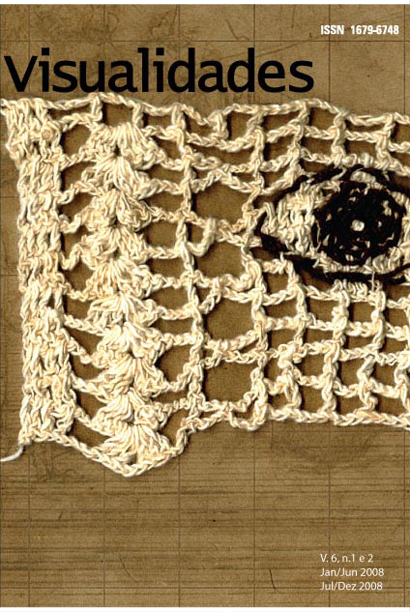Educação e arte popular: experiência estética para análises filosóficas em Richard Shusterman - DOI 10.5216/vis.v6i1eI2.18103
DOI:
https://doi.org/10.5216/vis.v6i1ei2.18103Abstract
Esse é um projeto de investigação sobre as condições e as práticas sociais efetivas pelas quais as apresentações artísticas do movimento cultural popular Hip Hop são produzidas e consumidas, no currículo para a Educação de Jovens e Adultos, na escola municipal Regina Helou, no ano de 2008. Origina-se de minha experiência pedagógica com as manifestações artísticas, ditas populares, de jovens negros da periferia de Goiânia. O Rap, o Grafite e o Break - respectivamente música, artes visuais e dança - são explorados de forma intertextual. Fundamento minhas reflexões no livro Vivendo a arte: o pensamento prag- matista e a estética, de Richard Shusterman, editado no Brasil em 1998. Nessa obra, o autor desenvolve sentidos progressistas e democráticos para a filosofia estética, estabelecendo um campo conceitual da arte como experiência, com base em John Dewey (1859–1952). Seu objetivo é considerar e defender esteticamente as formas artísticas populares da mídia/cotidiano. Sentindo-me provocada pelo autor, como objetivo principal investigar o poder pedagógico e estético do Hip Hop, de acordo com pressupostos teóricos da tendência pedagógica Histórico Crítica dos Conteúdos. Para isso, pretendo observar os impas- ses gerados pela contraposição entre formal e o não formal, através da análise do contexto e da visibilidade / invisibilidade de tais práticas artísticas, que não se enquadram no currículo oficial escolar.
Palavras-chave: Educação, hip hop, intertextualidade
Downloads
Downloads
Published
How to Cite
Issue
Section
License

This work is licensed under a Creative Commons Attribution 4.0 International License .
Authors who publish in this journal agree to the following terms:
a. Authors retain the copyright and grant the journal the right of first publication, with the work simultaneously licensed under the Creative Commons Attribution 4.0 License which allows the sharing of work with acknowledgment of authorship and initial publication in this journal.
b. Authors are authorized to take additional contracts separately, for non-exclusive distribution of the version of the work published in this journal (eg publish in institutional repository or as a book chapter), with acknowledgment of authorship and initial publication in this journal.
c. Authors are allowed to publish and distribute their work online (eg in institutional repositories or on their personal page) after the initial publication in this journal, as this can generate productive changes, as well as increase the impact and citation of the published work ( See The Effect of Free Access).
Every effort has been made to identify and credit the rights holders of the published images. If you have rights to any of these images and have not been correctly identified, please contact the Visuals magazine and we will publish the correction in one of the next issues.






